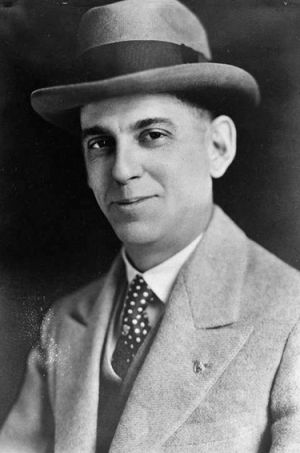Philip Mewhinney: Difference between revisions
(Created page with "'''Philip S. Mewhinney''' (born 1889 in Birmingham; died 1970) was an architect who practiced in Birmingham in the 1910s and 20s. Mewhinney earned his bachelo...") |
No edit summary |
||
| (2 intermediate revisions by the same user not shown) | |||
| Line 1: | Line 1: | ||
'''Philip | [[File:Philip Mewhinney.jpg|right|thumb|Philip Mewhinney]] | ||
'''Philip Stanhope Mewhinney''' (born [[1889]] in [[Birmingham]]; died [[1970]]) was an architect who practiced in [[Birmingham]] in the 1910s and 20s. | |||
Mewhinney earned his bachelor of arts and architecture at the Carnegie Institute of Technology in Pittsburgh, Pennsylvania in [[1912]]. He worked for a year with Dennison & Hirons, Architects, in New York, New York and then the next year in the atelier of Thomas Laloux in Paris, France. | Mewhinney was the son of [[Ajax Metal Company]] engineer [[Nat Mewhinney]]. He earned his bachelor of arts and architecture at the Carnegie Institute of Technology in Pittsburgh, Pennsylvania in [[1912]]. He worked for a year with Dennison & Hirons, Architects, in New York, New York and then the next year in the atelier of Thomas Laloux in Paris, France. | ||
After returning home to Birmingham, he partnered with [[Jacob Salie]] in the firm of [[Salie & Mewhinney]] with offices in the [[Woodward Building]]. The firm was noted for designing many modest-sized Craftsman-style homes in growing sections of the city, including [[Norwood]], [[Milner Heights]], [[Lakeview]], [[South Highlands]], [[Shades Mountain]], [[East Lake]], [[Ensley]], [[Edgewood]], as well as in Selma and Sheffield. | After returning home to Birmingham, he partnered with [[Jacob Salie]] in the firm of [[Salie & Mewhinney]] with offices in the [[Woodward Building]]. The firm was noted for designing many modest-sized Craftsman-style homes in growing sections of the city, including [[Norwood]], [[Milner Heights]], [[Lakeview]], [[South Highlands]], [[Shades Mountain]], [[East Lake]], [[Ensley]], [[Edgewood]], as well as in Selma and Sheffield. | ||
Salie and Mewhinney split in [[1918]] and both maintained their own offices. | Salie and Mewhinney split in [[1918]] and both maintained their own offices. In [[1921]] Mewhinney was elected treasurer of the [[Alabama Chapter of the American Institute of Architects]]. | ||
==References== | ==References== | ||
| Line 14: | Line 15: | ||
[[Category:1970 deaths]] | [[Category:1970 deaths]] | ||
[[Category:Architects]] | [[Category:Architects]] | ||
[[Category:Woodward Building]] | |||
Latest revision as of 13:05, 9 March 2019
Philip Stanhope Mewhinney (born 1889 in Birmingham; died 1970) was an architect who practiced in Birmingham in the 1910s and 20s.
Mewhinney was the son of Ajax Metal Company engineer Nat Mewhinney. He earned his bachelor of arts and architecture at the Carnegie Institute of Technology in Pittsburgh, Pennsylvania in 1912. He worked for a year with Dennison & Hirons, Architects, in New York, New York and then the next year in the atelier of Thomas Laloux in Paris, France.
After returning home to Birmingham, he partnered with Jacob Salie in the firm of Salie & Mewhinney with offices in the Woodward Building. The firm was noted for designing many modest-sized Craftsman-style homes in growing sections of the city, including Norwood, Milner Heights, Lakeview, South Highlands, Shades Mountain, East Lake, Ensley, Edgewood, as well as in Selma and Sheffield.
Salie and Mewhinney split in 1918 and both maintained their own offices. In 1921 Mewhinney was elected treasurer of the Alabama Chapter of the American Institute of Architects.
References
- Shelby, Thomas M. (Fall 2009) "Regionalism and Individualism in American Craftsman Architecture: Some Examples from Birmingham, Alabama." Paper for History of Architecture in the United States. Georgia Institute of Technology
